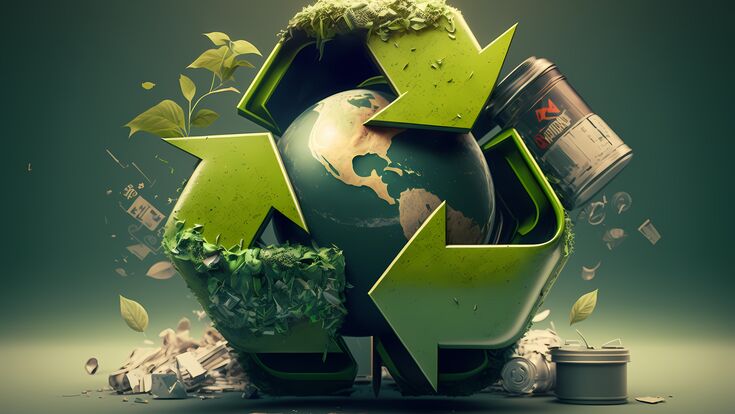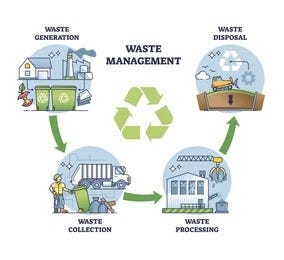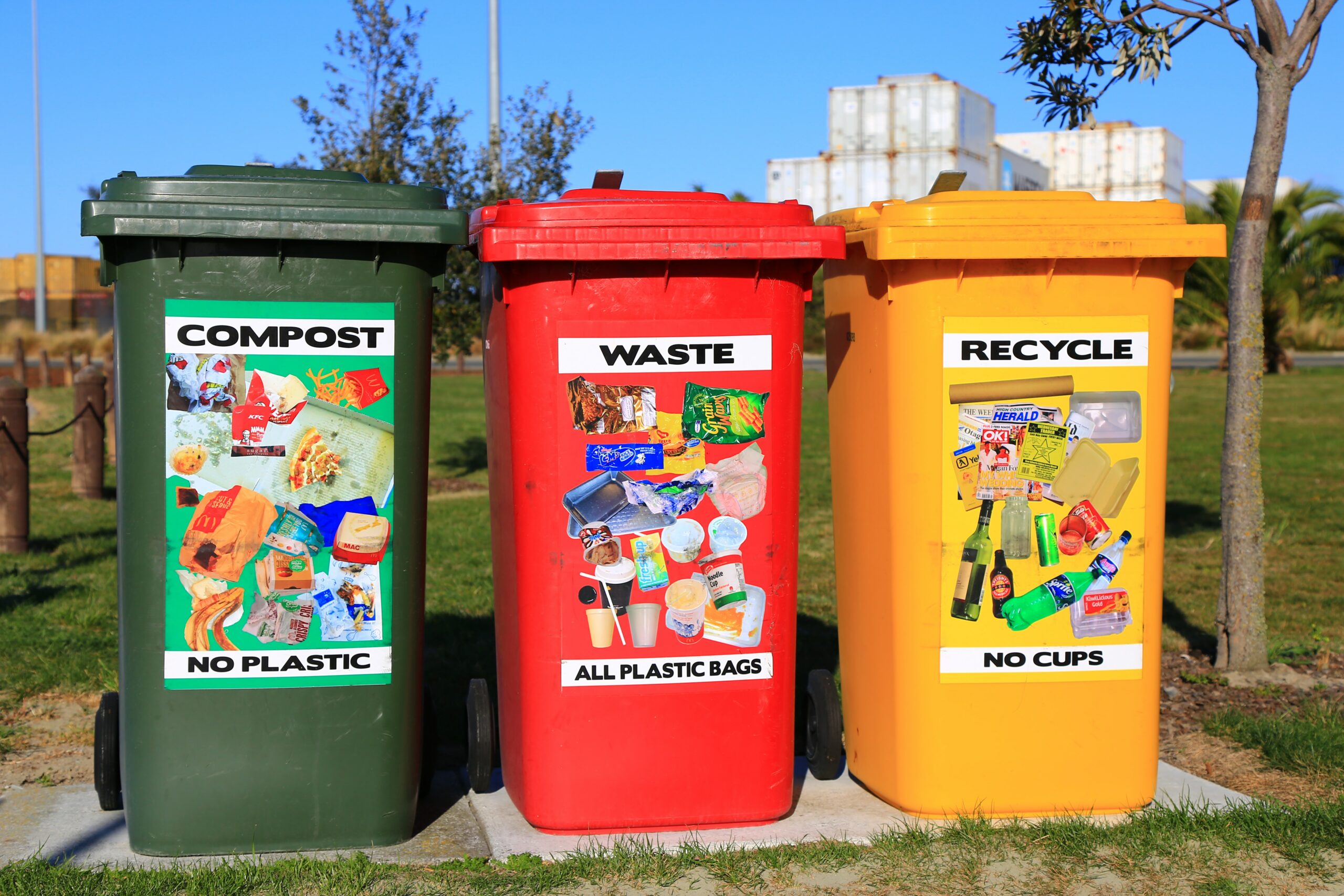Comprehending the Classification and Handling of Numerous Types of Waste
Efficient waste monitoring is crucial for environmental sustainability, requiring a thorough understanding of the classification and handling of numerous waste types. House waste, commercial by-products, unsafe materials, electronic refuse, and natural residues each demand distinctive procedures to make sure security and decrease ecological damage.

Home Waste
Home waste, encompassing a broad selection of thrown out products created from day-to-day living activities, represents a substantial part of the general waste stream - recycling lives services. This classification includes organic waste such as food scraps, backyard trimmings, and paper items, along with not natural products like plastics, metals, and glass. The diverse nature of home waste requires efficient classification and management to minimize ecological impact and advertise sustainable living methods
Reliable house waste management starts with partition at the resource, promoting recycling, composting, and safe disposal. Organic waste, for instance, can be composted to produce nutrient-rich dirt amendments, minimizing land fill concern and boosting dirt health. Recyclable materials, consisting of paper, glass, and specific plastics, can be refined and repurposed, preserving resources and lowering energy intake connected with new material production.
In addition, unsafe house waste such as batteries, electronic gadgets, and cleaning chemicals needs specialized dealing with to avoid dirt and water contamination. Public understanding projects and hassle-free disposal options play essential roles in making sure appropriate disposal and recycling of these materials. By carrying out durable waste reduction approaches and cultivating area engagement, communities can substantially minimize the environmental footprint of home waste.
Hazardous Waste
Industrial waste, a major contributor to international waste generation, incorporates a diverse variety of products created by manufacturing, building and construction, and other industrial activities. Effective monitoring of commercial waste is essential for minimizing environmental influence and promoting lasting practices.
The handling of commercial waste normally entails several procedures: collection, disposal, segregation, and treatment. Collection systems are made to effectively gather waste products from various sources within an industrial operation. Segregation is crucial, as it makes sure recyclable products are separated from non-recyclable ones, which can be routed towards suitable recycling or disposal networks. Treatment procedures, consisting of physical, chemical, and organic methods, are used to decrease the toxicity, volume, and ecological impact of the waste. Disposal approaches like landfilling or incineration are used for waste that can not be reused or treated.
Adopting strategies such as waste minimization, source recuperation, and recycling can dramatically reduce the problem of commercial waste on the setting, adding to more sustainable commercial methods.
Contaminated Materials

Harsh wastes can harm or damage living materials and cells. Combustible wastes can easily ignite, presenting fire threats, while responsive wastes can trigger surges or launch poisonous gases upon call with various other substances.
Effective contaminated materials administration entails numerous crucial techniques: recognition and partition of hazardous materials, secure transport and storage, and suitable therapy and disposal. Treatment methods might consist of chemical stablizing, incineration, and neutralization. Governing conformity is important, led by frameworks visit this web-site such as the Resource Conservation and Recovery Act (RCRA) in the United States, which ensures eco audio and risk-free management of contaminated materials.
Digital Waste
Digital waste, often abbreviated as e-waste, represents a growing challenge in waste administration because of the fast obsolescence of modern technology. This group incorporates a broad variety of discarded digital tools, consisting of smart devices, computer systems, televisions, and home devices. The complexity of e-waste exists in its make-up; these things include a mixture of useful materials such as gold and copper, in addition to harmful compounds like lead, cadmium, and mercury.

Regulation and guidelines, such as the European Union's Waste Electric and Electronic Tools (WEEE) Directive, goal to advertise liable e-waste management. These policies mandate suppliers to assist in the collection and recycling of digital products, thus reducing the burden on land fills and lessening ecological contamination.
Organic Waste
Organic waste, incorporating eco-friendly materials such as food scraps, backyard trimmings, and agricultural deposits, comprises a significant portion of the municipal solid waste stream. This kind of waste is noteworthy not only for its quantity yet also for its potential environmental influence otherwise handled appropriately. Organic waste can decompose anaerobically in landfills, producing methane, a potent greenhouse gas adding to climate adjustment.
Appropriate handling of natural waste includes several approaches. Composting is a commonly embraced method, changing organic products into important compost that can enrich soil and assistance lasting farming. This procedure also reduces the quantity of waste sent out to land fills. An additional approach is anaerobic digestion, which breaks down raw material in the absence of oxygen, generating biogas that can be used as an eco-friendly power source. In addition, diverting food waste from landfills with donation programs can relieve food insecurity while reducing waste.
Municipalities and businesses more information are progressively recognizing the value of organic waste administration. Applying detailed organic waste recycling programs not just alleviates ecological effects yet likewise lines up with more comprehensive sustainability goals, advertising a circular economic situation where sources are consistently recycled and repurposed.
Conclusion
Effective waste administration and environmental protection demand an extensive understanding of the classification and handling of various waste types. Applying suitable methods for each waste kind makes certain responsible and risk-free waste monitoring practices, eventually adding to the defense of ecosystems and public health and wellness.
Efficient waste monitoring is pivotal for environmental sustainability, requiring a comprehensive understanding of the category and handling of numerous waste kinds.Household Visit This Link waste, encompassing a broad variety of disposed of products created from day-to-day living tasks, represents a significant component of the overall waste stream.Industrial waste, a major contributor to worldwide waste generation, includes a diverse variety of materials created by manufacturing, building, and various other industrial activities (recycling lives services).Dangerous waste, a critical concern in waste management, comprises products that posture substantial threats to human wellness and the atmosphere due to their hazardous, destructive, flammable, or reactive buildings.Organic waste, incorporating eco-friendly materials such as food scraps, yard trimmings, and agricultural deposits, comprises a considerable part of the municipal solid waste stream